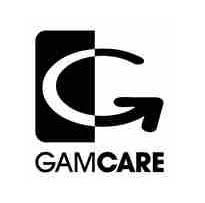We would all love to move up the buy-in levels in pot-limit omaha, progressively crushing the bigger games while watching our bankroll grow. In reality moving up requires greater skill, less ‘unforced errors’ and giving our opponents a little more credit for having poker skills. This article looks at the differences between the small and middle buy-in levels at a typical online poker site – and shows you what to expect in terms of skill differences of the opposition and types of errors made.
First of all we must note that there are no ‘perfect’ examples of tables at each level, what you will find is that there is considerable overlap between the games depending on the makeup of individual players. A ‘Good’ $1 / $2 table may involve the same number of errors as a 50c / $1 table at times – while that same $1 / $2 table might be full of ‘grinders’ an hour later and not be profitable at all. For this reason we urge all readers to spend a little time selecting the most profitable PLO Poker tables before starting every session.
There are two ways of measuring differences between the Pot-Limit Omaha buy-in levels, the overall number of errors made, and the types of errors you will encounter. We also note that tables become far more aggressive as you move up levels, playing the ‘rock’ becoming less profitable as your aggressive opponents become aware enough not to pay you off when you have a monster!
Omaha Planet Strong Rec: You need good traffic at a site to make the mid+ levels profitable, playing the same old regulars who are all waiting for the nuts will just not cut it. For this reason we strongly recommend Pokerstars, where you will find juicy games at surprisingly high buy-ins. With great software and the best loyalty bonus scheme anywhere online you really need to ensure you check out the world’s most popular poker site for yourself. Marketing code PSP3108 will get you a 100% first deposit match to clear while you check the games at Pokerstars.com for yourself!
Difference Between Buy-In Levels In Pot-Limit Omaha – Summary
PLO $10 (5c / 10c blinds): Loose and passive, expect to see 60% + to each flop and generally unraised pots. Errors are huge and include drawing to low straights and non-nut flushes and even stacking off with an over-pair. The huge number of mistakes mean you really do not need to force the action at this level, raise your good hands for value and wait for your opponents to give you their stacks.
PLO $25 (10c / 25c blinds): Even at this level you will start to find one or two multi-table grinders. Again the pre-flop action is loose-passive, with many multi-way pots. While you will find nut-peddlers, most of the mistakes still revolve around chasing weak draws and hands. Once again these games can be beaten playing straight forward poker, raising for value and bluffing infrequently.
PLO $50 (25c / 50c blinds): This is the level where you will find a lot of the Texas Holdem players who are trying out Omaha for a bit of variation – along with an increasing number of low-stakes multi-tabling grinders. Here the game starts to become more aggressive pre-flop. While there are less ‘chasing non-nuts’ errors, hands are still overvalued, especially top two / small sets. Key opponent errors here include not realizing that combo draws are big favorites (leads to folding when holding significant equity and also overplaying vulnerable made hands).
PLO $100 (50c / $1 blinds): Grinders love this level, you will often find a table full of apparently tight / passive players who suddenly spring to life once every 20 hands with huge bets. Less errors at this level, and often more aggression in general – especially from position. You will start to see the profit coming from 2 or three weak players, the ‘aces-only raiser’ being a goldmine here. Isolating the fish with position, ideally with a deep stack – is often a profitable strategy… just make sure that opponents acting after you do not take the play away from you too often!
PLO200 ($1 / $2 blinds) At this level the majority of your opponents will be reasonable players, big bets will go into the pot earlier and less of the players will make the ‘huge’ errors such as overplaying aces or stacking off with a weak straight. Aggression and balance are both essential here, pots often being 3 or 4-bet pre-flop, with the money going in frequently early in the hand. If you do not have the bankroll (or stomach!) for big swings then this level may not be for you.
PLO400 ($2 / $4 blinds) Here the nature of mistakes changes again, since your opponents will so rarely make huge errors you will need to assess their individual leaks and adjust your own play to exploit them. Equity edges against ranges of possible hands become key, hand reading skill a must – and you will need to aggressively defend position to the point where your opponents become wary of playing out of position against you… PLO400+ is not for the faint-hearted!
Selective Play
When considering the most profitable tables we also need to note that not all Omaha poker sites have the same number of grinders or experienced players. We already recommended Pokerstars, where the sheer volume of players gives you the opportunity to find weaker tables. Alongside this you need to continually table select. Games can easily become unprofitable if the fishier players leave and a bunch of regulars join. By reassessing each table every 15 to 20 minutes you will be able to spot and move from bad games, which will increase your hourly profit very fast indeed. Make sure you check out LockPoker.com today – a great choice for Omaha games.




